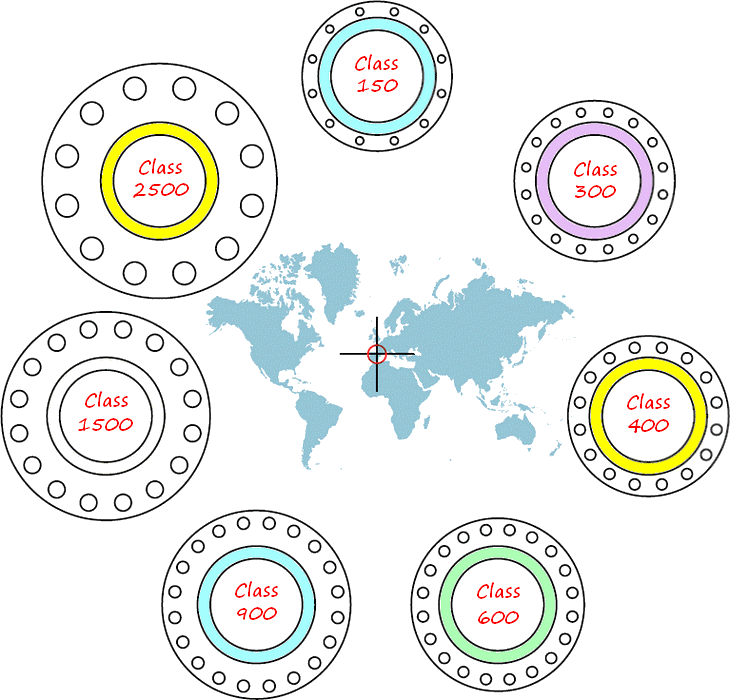Pressure Classes of Flanges
Forged steel flanges ASME B16.5 are made in seven primary Pressure Classes:
150
300
400
600
900
1500
2500
The concept of flange ratings likes clearly. A Class 300 flange can handle more pressure than a Class 150 flange, because a Class 300 flange are constructed with more metal and can withstand more pressure. However, there are a number of factors that can impact the pressure capability of a flange.
Pressure Rating Designation
The Pressure Rating for flanges will be given in Classes.
Class, followed by a dimensionless number, is the designation for pressure-temperature ratings as follows: Class 150 300 400 600 900 1500 2500.
Different names are used to indicate a Pressure Class. For example: 150 Lb, 150 Lbs, 150# or Class 150, all are means the same.
But there is only one correct indication, and that is Pressure Class, according to ASME B16.5 the pressure rating is a dimensionless number.
Example of Pressure Rating
Flanges can withstand different pressures at different temperatures. As temperature increases, the pressure rating of the flange decreases. For example, a Class 150 flange is rated to approximately 270 PSIG at ambient conditions, 180 PSIG at approximately 400°F, 150 PSIG at approximately 600°F, and 75 PSIG at approximately 800°F.
In other words, when the pressure goes down, the temperature goes up and vice versa. Additional factors are that flanges can be constructed from different materials, such as stainless steel, cast and ductile iron, carbon steel etc.. Each material have different pressure ratings.
Below an example of a flange NPS 12 with the several pressure classes. As you can see, inner diameter and diameter of the raised face at all the same; but outside diameter, bolt circle and diameter of bolt holes become larger in each higher pressure class.
The number and diameters (mm) of the bolt holes are:
Class 150: 12 x 25.4
Class 300: 16 x 28.6
Class 400: 16 x 34.9
Class 600: 20 x 34.9
Class 900: 20 x 38.1
Class 1500: 16 x 54
Class 2500: 12 x 73

Pressure-Temperature Ratings – Example
Pressure-temperature ratings are maximum allowable working gage pressures in bar units at the temperatures in degrees celsius. For intermediate temperatures, linear interpolation is permitted. Interpolation between class designations is not permitted.
Pressure-temperature ratings apply to flanged joints that conform to the limitations on bolting and on gaskets, which are made up in accordance with good practice for alignment and assembly. Use of these ratings for flanged joints not conforming to these limitations is the responsibility of the user.
The temperature shown for a corresponding pressure rating is the temperature of the pressure-containing shell of the component. In general, this temperature is the same as that of the contained fluid. Use of a pressure rating corresponding to a temperature other than that of the contained fluid is the responsibility of the user, subject to the requirements of applicable codes and regulations. For any temperature below -29°C, the rating shall be no greater than the rating shown for -29°C.
As an example, below you will find two tables with material groups ASTM, and two other tables with flange pressure-temperature ratings for those ASTM materials ASME B16.5.
Post time: Jun-05-2020
